Rotating Electrical Machines
Original price was: ₹12,734.14.₹10,187.31Current price is: ₹10,187.31.
ISBN: 9781848211698
Author/Editor: Ren?Le Doeuff
Publisher: John Wiley
Year: 2010
2 in stock (can be backordered)
Description
In this book a general matrix-based approach to modeling electrical machines is promulgated. The model uses instantaneous quantities for key variables and enables the user to easily take into account associations between rotating machines and static converters (such as in variable speed drives). General equations of electromechanical energy conversion are established early in the treatment of the topic and then applied to synchronous, induction and DC machines. The primary characteristics of these machines are established for steady state behavior as well as for variable speed scenarios. Important new applications for this technology (such as wind turbines, electric propulsion systems for large ships, etc.) are addressed and the book is illustrated with a large number of informative and detailed photographs, provided by various companies at the leading edge of research and applications in the field.
Additional information
| Weight | 0.588 kg |
|---|
Product Properties
| Year of Publication | 2010 |
|---|---|
| Table of Contents | Preface ix Chapter 1. Main Requirements 1 1.1. Introduction 1 1.2. Sinusoidal variables 1 1.2.1. Single-phase variables 1 1.2.2. 2-phase voltages and currents 4 1.2.3. Balanced 3-phase sinusoidal systems 5 1.2.4. Unbalanced 3-phase sinusoidal systems: Fortescuesymmetrical components 8 1.3. Electromagnetism 12 1.3.1. Primary laws 12 1.3.2. Materials and magnetic circuits 14 1.3.3. Inductances 24 1.3.4. Skin effect or Kelvin effect 29 1.3.5. Torque calculation using the virtual work principle30 1.4. Power electronics 36 1.4.1. Rectifiers and naturally commutated inverters 37 1.4.2. AC thyristor controllers 41 1.4.3. Choppers 44 1.4.4. Cycloconverters 47 1.4.5. Force commutated inverters 47 Chapter 2. Introduction to Rotating Electrical Machines49 2.1. Introduction 49 2.2. Main notations 50 2.2.1. Vectors 51 2.3. Principle of the electromechanical energy conversion 51 2.4. Continuous energy conversion 55 2.5. Non-salient and salient poles 55 2.6. Notion of pole pitch 58 2.7. Stator/rotor coupling: the basic machine 59 2.8. Losses within the machines 69 2.8.1. Losses due to Joule effect (or Joulelosses ) 69 2.8.2. Electromagnetic losses (or iron losses )70 2.8.3. Mechanical losses 70 2.9. Nominal values 70 2.10. General sign covenant 71 2.11. Establishment of matricial equations 71 2.11.1. Working assumptions 72 2.11.2. Expression of the instantaneous torque 72 2.11.3. Continuous energy conversion in cylindrical machines74 2.11.4. Continuous energy conversion in salient pole machines77 2.12. Mechanical equation 79 2.13. Conclusion 80 Chapter 3. Synchronous Machines 81 3.1. Introduction 81 3.2. Introduction and equations of the cylindrical synchronousmachine 82 3.2.1. General description 82 3.2.2. Why synchronous? 85 3.2.3. Rotation speeds at constant frequency 88 3.2.4. Equations of the cylindrical machine 88 3.3. Analysis of the synchronous machine connected to aninfinite power network 93 3.3.1. Phasor diagram 93 3.3.2. Active (P) and reactive (Q) graduation of the voltagediagram 94 3.3.3. Internal powers 96 3.3.4. Stability of the synchronous machine 100 3.3.5. V-curves called Mordey curves 106 3.3.6. Case when resistance R is negligible 110 3.4. Considerations about the salient pole synchronous machine111 3.4.1. Torque and inductance matrix 112 3.4.2. Calculation of the flux 113 3.4.3. Electrical equation and phasor diagram 118 3.4.4. Calculation of the torque and stability analysis 120 3.5. Consideration about permanent magnet machines 122 3.5.1. Surface permanent magnets machines 123 3.5.2. Machines with inserted magnets 124 3.5.3. Machines with embedded magnets 125 3.5.4. Modeling of permanent magnet machines 128 3.5.5. Cylindrical machine modeling 130 3.6. Inverted AC generators 137 3.7. Implementation of synchronous machines 138 3.7.1. Implementation of synchronous motors 138 3.7.2. Implementation of the AC generators taking into accountthe saturation phenomena 150 3.8. Experimental determination of the parameters164 3.8.1. Cylindrical machine in linear state 164 3.8.2. Saturation of the cylindrical machine 164 3.8.3. Salient poles machine 165 Chapter 4. Induction Machines 167 4.1. Introduction 167 4.2. General considerations 168 4.2.1. Structures 168 4.2.2. Working principle 172 4.3. Equations 173 4.3.1. Main notations 173 4.3.2. Sign covenants and working assumptions 174 4.3.3. Conventional representation 175 4.3.4. Flux analysis 175 4.3.5. Electrical equations 179 4.3.6. Change in the sign covenant 180 4.4. Equivalent circuits 181 4.5. Induction machine torque 183 4.5.1. Instantaneous torque 183 4.5.2. Analysis of the energy transfer 185 4.5.3. Expression of the electromagnetic torque in terms of theslip 187 4.6. Study of the stability 189 4.7. Circle diagram (or Blondel diagram) 192 4.7.1. Introduction 192 4.7.2. g and in 1/g graduation of the circle 193 4.7.3. Simplified circle diagram 195 4.8. Induction machine characteristics 200 4.9. Implementation of induction machines 205 4.9.1. Motor mode 205 4.9.2. Generator mode 217 4.9.3. Single-phase induction motor 225 4.10. Principle of the experimental determination of theparameters 234 4.10.1. Case of wound rotor induction machines 234 4.10.2. Case of cage induction machines 235 Chapter 5. Direct Current Machines 237 5.1. Introduction 237 5.2. Main notations 238 5.3. DC machine structure 238 5.3.1. Constituents 238 5.3.2. Analysis of the field winding 242 5.3.3. Analysis of the armature winding 244 5.4. DC machine equations 252 5.4.1. Hypotheses and covenants 252 5.4.2. Equations 252 5.4.3 Determination of the parameters 256 5.5. Separately excited motor 258 5.5.1. Introduction 258 5.5.2. External characteristics 260 5.5.3. Energy recovery: generator operating 265 5.6. Series excited motor 269 5.6.1. Introduction 269 5.6.2. External characteristics 271 5.7. Special case of the series motor: the universal motor274 5.8. Commutation phenomena 274 5.9. Saturation and armature reaction 278 5.10. Implementation of DC motors 279 5.10.1. Constant voltage implementation 280 5.10.2. Present implementation of DC motors 284 Bibliography 287 Index 289 |
| Author | Ren?Le Doeuff |
| ISBN/ISSN | 9781848211698 |
| Binding | Hardback |
| Edition | 1 |
| Publisher | John Wiley |
You must be logged in to post a review.

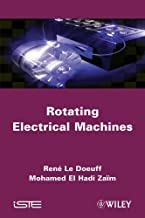
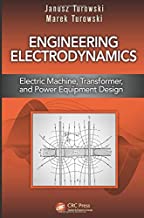
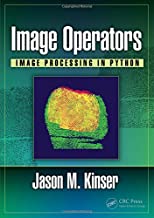
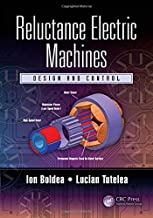
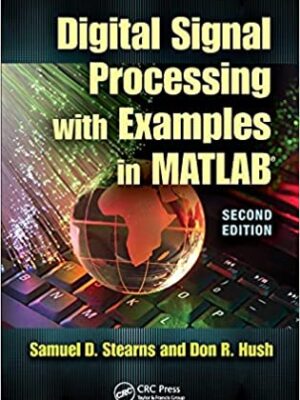
Reviews
There are no reviews yet.